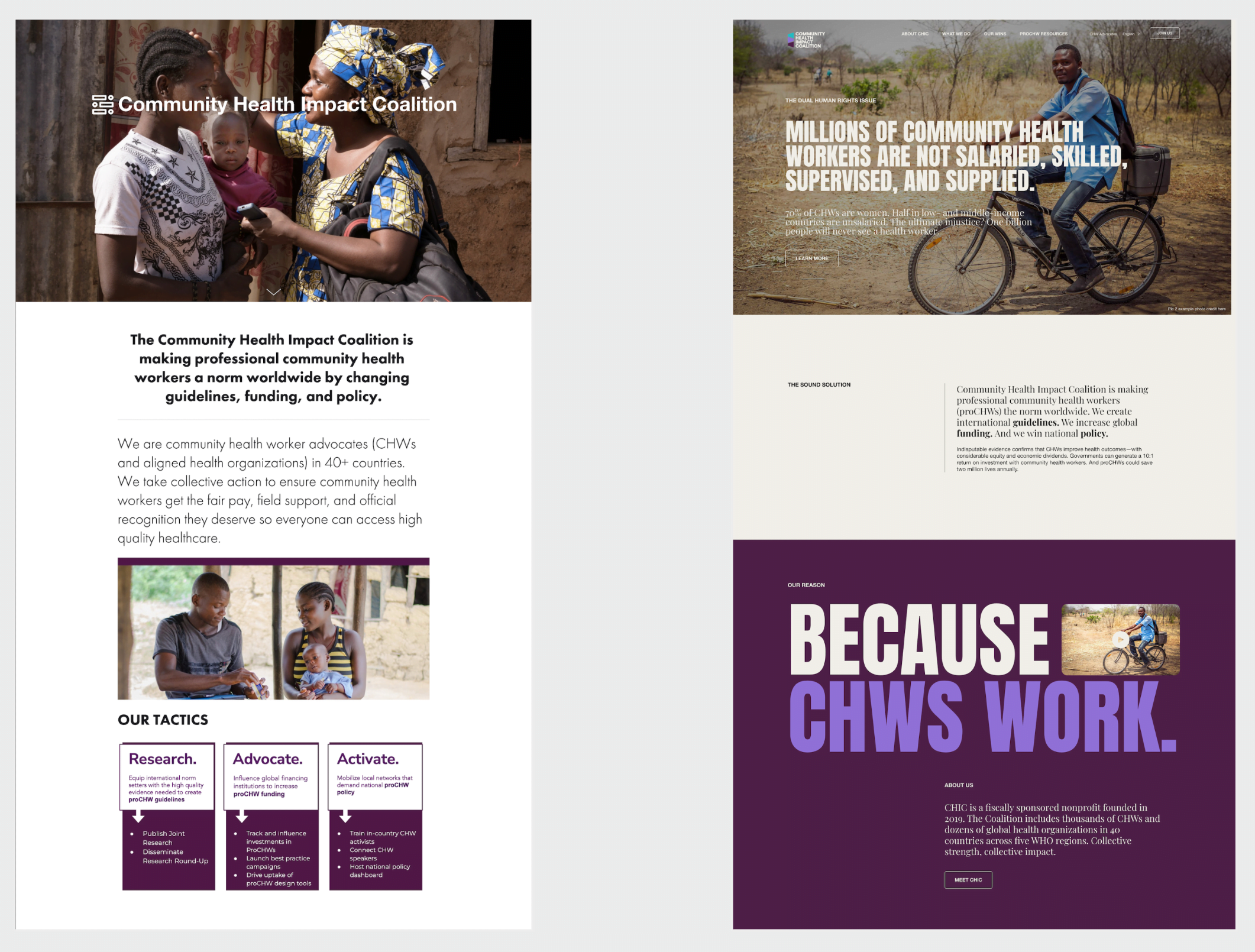Visual identity: a simple but complete guide.
How to develop your nonprofit or foundation branding

It’s OK for nonprofits and foundations to be sexy. Because how you look matters for what you say. And a seductive visual identity communicates a lot.
Since the human brain processes images 60,000 times faster than text, even a glance at your visuals tells your audience much.
Before they even read or hear a single line.
So in a world where our brains are bombarded with more than 11 million signals — each second — we need every communications advantage we can get.
Every edge to ensure our thinking and messaging lands.
But for some reason, we’ve come to believe organizations can’t look too slick in the social sector.
That we actually want to look a little needy.
That we shouldn’t invest money in branding.
That it’s somehow OK to have a shitty identity.
Because “it’s only the impact that matters.”
Wrong.
Let’s correct the score.
“Design is thinking made visual.”
SARA LITTLE TURNBULL
Why your visual identity matters.
Breaking through the noise
A unique visual identity can set an organization apart from other nonprofits. And ensure its mission stands out in the minds of potential supporters.
Fostering trust & credibility
Gaining the trust of donors, volunteers, and participants is essential. Visual consistency in branding can reassure stakeholders of professionalism and integrity. And donors believe in nonprofits they recognize.
Increasing engagement
Compelling visuals can lead to more social media shares, more event attendance, and more content engagement. A thoughtful visual identity can resonate with local cultures. It can act as a bridge, reflecting respect and understanding for the communities served.
A rallying cry for teams & partners
A solid visual identity can mobilize volunteers and community members around a cause. It creates a sense of belonging and unity. A stylish identity can attract collaborations and partnerships, amplifying a nonprofit’s reach and resources.
“In the brand world, strategy without design is lifeless, and design without strategy is mute.”
VON GLITSCHKA
What goes into a visual identity?
Your logo isn’t your brand, just as the clothes don’t make the person. Like people, brand is deeper than how it’s represented on a page.
But we all make specific choices on how to dress for a job interview or first date. Because appearance can and does matter. That look is your visual identity. Part of your brand.
You can think of a visual identity in five basic parts:
- Logo
- Color palette
- Typography (i.e., fonts)
- Graphic elements (e.g., iconography or symbols)
- Photography
But the parts work in totality.
Some parts of the identity system will elevate one piece of your brand character. Some will accentuate other traits. So you must focus on the whole.
There’s a mantra in the design world: “form equals function.” This means an excellent visual identity isn’t just a set of marks that are pleasing to the eye.
It should be built on intentional choices, and informed by your theory of change and positioning strategy. Every element should have a purpose.
Some nonprofits and foundations have a decent identity to build upon. So we’re often just refreshing elements that don’t work. Some identities we evolve, keeping a few visual equities to tie the old and new systems together.
Other organizations need a major overhaul. Nothing is sacred. Nothing is spared.
So get clear where you are on the spectrum.

For client Community Health Impact Coalition, our visual identity project was more than a refresh — but not quite an overhaul. We kept their original purple. And evolved their triptych logo symbol. But just about everything else changed.
Five steps to create a visual identity.
There’s no one, perfect way to build a visual identity. But we use a gated, waterfall process that includes a few standard steps.
First, a moodboard. With that approval comes a few logo options. Third, with a logo selected, we start exploring color combos, typography, graphic elements, and photography. Finally, the full guidelines.
Here’s the breakdown.
STEP ONE
Before talking about the visual identity itself, it’s critical to root the creative in the positioning strategy work already completed. And already decided on.
So recap where you landed on priority audiences, character, traits, and style. These four elements will drive every visual decision from here on out — make sure they’re firm in your mind.
STEP TWO
Next, you need to look back to your previous and current visual identity. What’s working and not today can shed light on where to go (and what to avoid) in the future.
So, think about logo, colors, typography, graphics, and photography. Plus all your guidelines and templates. Then unpack what’s right, wrong, missing, and confused.
STEP THREE
Think about any brand in any space.
All creative work builds on what came before. So the more good ideas you collect, the more you can choose from to be influenced by.
Not to mention, nonprofits and foundations can learn a lot about branding from the private sector. So let your imagination roam.
Who do you emulate and why?
Name three brands for which you love their visual identity. And that you think could be applicable to your own.
Why do you resonate with it? Which elements would you like to carry into your moodboard?
STEP FOUR
Now it’s time to talk brass tacks: the actual visual identity assets you’ll be creating. Of course there’s the logo, colors, and brand guidelines. But you need to ensure you’re covering any other needs.
All of these needs will end up in your creative brief. From that brief, your designers get to work. So let’s be sure you’re thinking of everything now.
Most visual identity projects carry over an idea or color or concept from the old. These visual equities are great ways to ensure your audiences recognize the refreshed system.
Plus, sometimes certain pieces of your identity are simply sacred to you. And that’s OK. As long as you name those elements now, before the ideation process begins.
STEP FIVE
Most social sector leaders have never been through a formal visual identity process. No shame. But, the process can go off track if you don’t make a few agreements with your creatives.
And, visual identity is the piece of a brand process where people without creative experience feel most eager to give advice. Because we can all see visuals — so it’s easy to comment on.
You should commit to the following:
1. Root all your feedback in brand strategy; not personal, subjective opinion.
2. Say the problem; let the creative professional find the solution.
3. Only those involved in brand strategy get to give feedback on creative.
4. Trust the process. They’re experts in brand. You’re experts in your work.
“Design should never say, ‘Look at me.’ It should always say, ‘Look at this’.”
MA YANSONG
A final word.
Congratulations. You have a new visual identity.
But you must use it well.
Creating a visual identity gets you to the starting line. Unfortunately, using it effectively is where many stumble. Logo files are buried in an unknown folder. Employees never download fonts. Templates are misapplied.
And it must be aligned with brand strategy.
So if you’re pushing social change, let your visuals shout it loud.
Your story is powerful.
Ensure your brand is seen — not just heard.
Read more articles
Ready to get fundable and findable?
We engage three ways: consulting, training, and field building.
